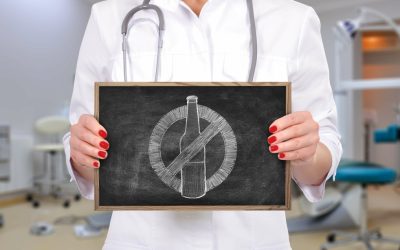It could take some time and effort to find a strategy that helps you navigate them effectively, but you do have plenty of options for support. When not drinking, you might begin to notice feelings of anxiety or other emotional distress, along with strong cravings for alcohol. Too much alcohol affects your speech, muscle coordination and vital centers of your brain.
How Do I Know If I Have a Swallowing Problem?
Many people repeatedly try to cut back or quit drinking, have a setback, then try to quit again. Think of an alcohol relapse as a temporary setback and keep persisting toward full recovery. Studies show that most people with an alcohol use disorder can benefit from some form of treatment.
More on Digestive Disorders

In humans, this type of tolerance can be shown in the performance of well-practiced games played under the influence of alcohol. For example, an person who typically plays darts sober would likely experience impairment in performance if intoxicated. But if a person regularly drinks while playing darts, they may experience no alcohol-related impairment because of their learned tolerance. People who regularly drink any amount of alcohol can become tolerant to these impairments and show few signs of intoxication – even when there are large amounts of alcohol in their bloodstream. If these drinkers stop or reduce their alcohol consumption, this tolerance could be lost. Alcohol cravings are common, especially when you first try to change your drinking habits.
- Hawaii is the only US state without any fluoride in municipal taps; fluoridated water is only available there on military bases.
- The city now plans to re-fluoridate its water supply, but cost issues and global supply chain problems post-pandemic have created delays.
- In more severe cases, the doctor might recommend a treatment clinic or in-patient addiction center.
Many times I’ve gone out for a few drinks and woke up somewhere, having blacked out the night before. Most people relapse into at least some drinking within the first year of finishing treatment. But research has shown that people who enter alcohol treatment with abstinence as their goal are drinking less two and a half years later than people who only aim to cut back. Only half of the very heavy drinking group had a diagnosis of alcohol dependence. I was drinking at least a couple of times a week — at least four standard units of alcohol disguised as two wines at networking functions on weekdays to upwards of eight units on nights out at weekends. Alcohol problems come from drinking too much, too fast, or too often.

How to handle work drinks when you’re going sober
And you’re at greater risk when you try to quit drinking on your own. A formal recovery plan gives you strategies for dealing with people or situations that could trigger relapses. When you’re recovering from alcohol use disorder, a relapse is why can’t i control my drinking when you start drinking again. It’s not the same thing as a lapse, which is temporary and short-term — such as when you have one drink at a party, then go back to not drinking. But if they start drinking at their previous levels again, alcohol-related impairments in cognition and behaviour could return – but after having smaller amounts of alcohol. These changes in tolerance reflect the brain’s desensitisation (increased tolerance) and resensitisation (reduced tolerance) to alcohol at the cellular level.
- AA meetings are full of stories of people who quit drinking for a spell or cut back.
- Just as different things can trigger alcohol cravings from person to person, different strategies can help you manage them.
- Her fields of interest include Japanese translation, cooking, natural sciences, sex positivity, and mental health, along with books, books, and more books.
- Sleep helps end blackouts because rest gives the body time to process the alcohol.
- A 2006 study found that temporary memory loss caused by a fall in blood pressure (syncope) is a more likely cause of nonalcoholic-induced blackouts.
In addition to affecting the liver, alcohol affects the brain, the heart, and both the central nervous system and the peripheral nervous system. This seemingly aware state can make it difficult for other people to recognize if a person is in a blackout. The nature of blackouts makes it difficult for researchers to examine the correlation between memory recall and blackout type.
But without a routine or daily responsibilities, alcohol use can more easily spiral, he says. “It’s addictive for people … and then it’s causing problems. We can’t then get frustrated with those people because we built out a cultural norm around it,” he says.

Some Common Reasons We May Use Alcohol
But untreated swallowing problems raise the risk of choking. In the first phase of swallowing, food or liquid is contained in the mouth by the tongue and palate (oral cavity). Crystal Raypole writes for Healthline and Psych Central. Her fields of interest include Japanese translation, cooking, natural sciences, sex positivity, and mental health, along with books, books, and more books.
From hangover cures to vitamin therapy, ‘pseudo medical wellness’ clinics are using crucial IV fluids
- If you have ever gone on a road trip, you will know that planning is the key to a successful road trip.
- In the early 1900s, dentists started noticing that children in specific towns, including Colorado Springs, Colorado; Oakley, Idaho; and Bauxite, Arkansas, were developing hard, chocolate-colored teeth.
- She lives in Washington with her son and a lovably recalcitrant cat.
- While the other three types of tolerance focus on alcohol’s effects on the brain, metabolic tolerance refers instead to the rapid elimination of alcohol from the body following prolonged or heavy alcohol consumption.
- Nearly 63% of the US population has fluoridated water flowing through their taps, according to the Centers for Disease Control and Prevention (CDC).
Sure, a tiny part of me still wishes I could participate in the rituals of drinking, especially at this summery time of year. My brain remembers well the relaxing blur of cold drinks poured into balmy evenings with friends. It’s common for alcohol and anger to be stereotypically lumped together, but many people labeled “angry” while drinking may actually be experiencing aggression or hostility.